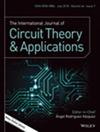Power Imbalance Analysis and Minimum Imbalance Power Based Power Balance Control for Nonagonal MMC in FFTS-Based Offshore Wind Farm
Abstract
Nonagonal modular multilevel converter (MMC) can achieve three-port direct AC-AC conversion and has good low frequency performance. Additionally, due to its highly branch-reused structure, it is advantageous in cost and size for the application in FFTS-based offshore wind farm. However, the instantaneous power of the branches in nonagonal MMC has an inherent DC component which would result in power imbalance and system instability. The traditional way to suppress the imbalance power is to insert DC neutral point bias voltages and indirectly generating a DC component in circulating current. Together, they can offset the imbalance power. Nonetheless, this would significantly increase the voltage and current stress of converter switching devices and hence weakening its advantages in cost. To address this issue, the generating mechanism of power imbalance is analyzed by comparing nonagonal MMC with other power balanced converters. The formerly neglected phase angle difference of the same frequency ports is also considered and is proved to have a significant influence on the overall imbalance power. Accordingly, a parameter adjustment method is proposed to obtain minimum imbalance power for nonagonal MMC. The effectiveness of the parameter adjustment method is verified by RTlab results, and the overall imbalance power can be reduced by as great as 99.35%.


 求助内容:
求助内容: 应助结果提醒方式:
应助结果提醒方式:


